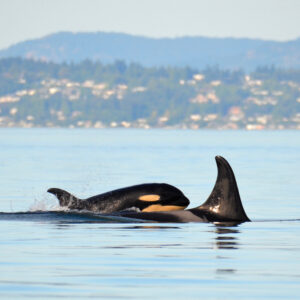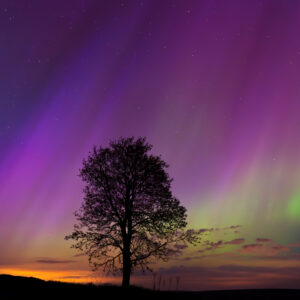North America’s Most Charismatic Seabird – the Atlantic Puffin
Thank you to our Nature Network partner, Nature Newfoundland and Labrador, for sharing this month’s blog.
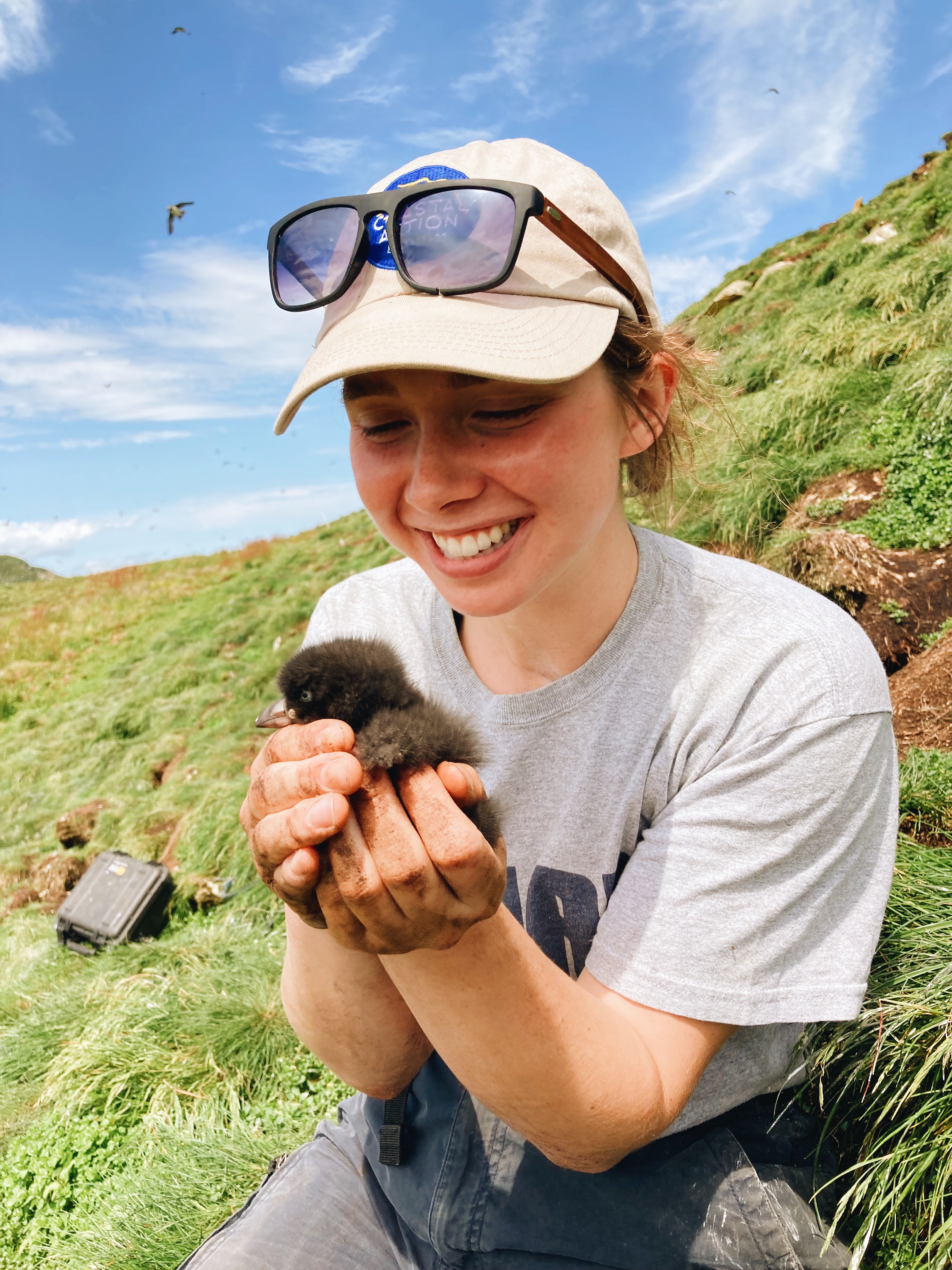
Author Jill Taylor with an Atlantic Puffin chick (Photo: Raul Zabala Belenguer)
It started off like any other day. A long coastal drive on the Irish Loop. Our red zodiac, already caked in salt. The 4°C water, blue as Gatorade™, was eerily calm. The sun was bright. To my right, Great Island stood tall, bound by steep cliffs topped with grass and peaty soil. To my left, a 10,000-year-old ice giant floated, twin peaks of white touching the sky. A distant whoosh of air broke the water’s glassy surface — two minke whales. We indulged in a lap around the iceberg before heading to our “office”— Witless Bay Ecological Reserve, Newfoundland.
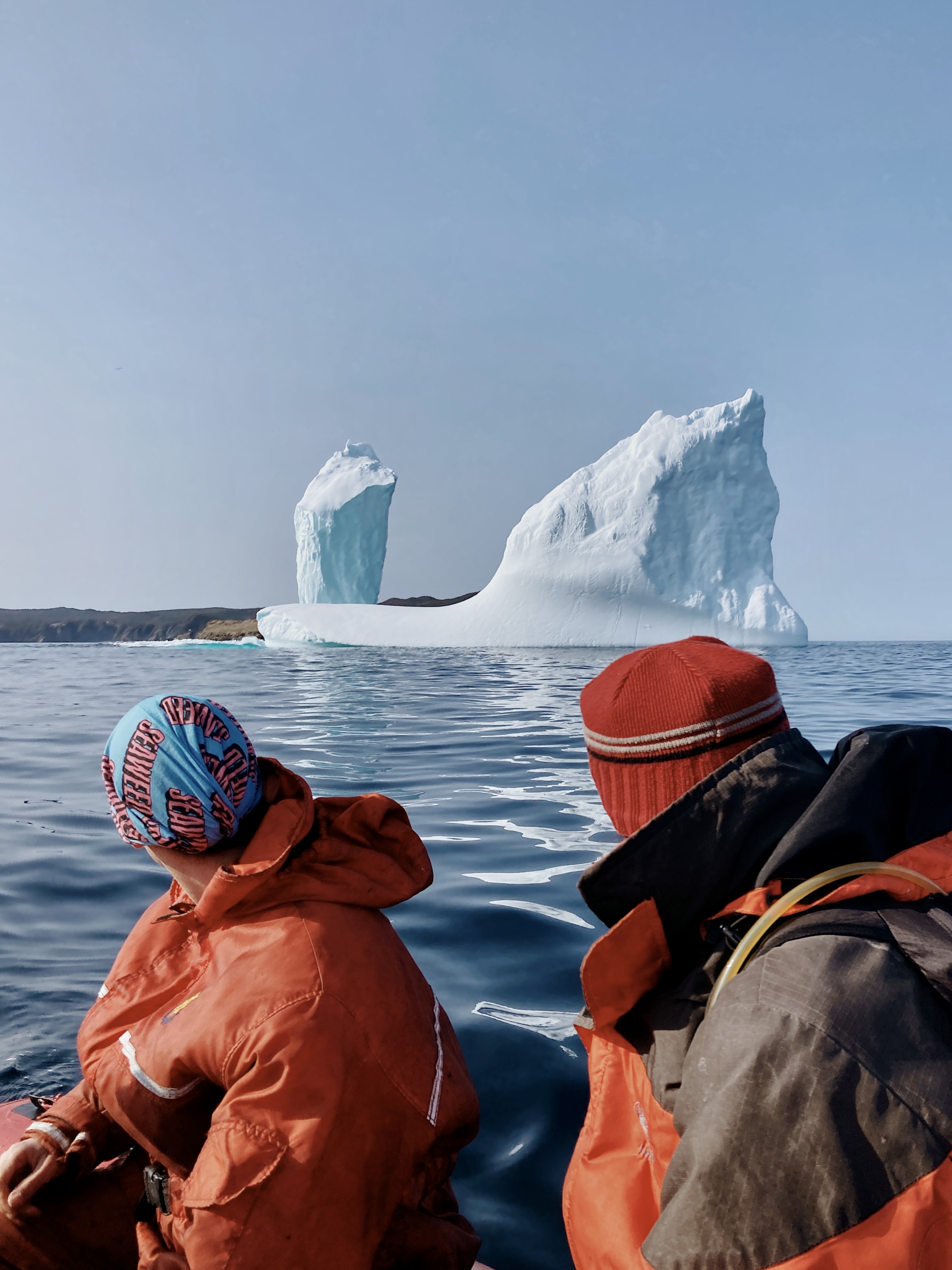
An “ice giant” in Witless Bay (Photo: Jill Taylor)
TUXEDO ATTIRE PLEASE
Sea Parrot, Clown Bird, Hatchetface—all are names for the Atlantic puffin (Fratercula arctica). Part of the Auk family, this Atlantic species makes up the bulk of the world’s puffins. They boast a tiny black and white tuxedo, orange booties, and an ornate red, orange, and yellow bill. They surf waves for fun, and can be heard making angry chainsaw noises from inside their burrows. Their geographic range stretches as far south as France and US (Maine), and they can be found in Canada, the UK, Iceland, Norway, Russia, and as far north as ice-free land exists.
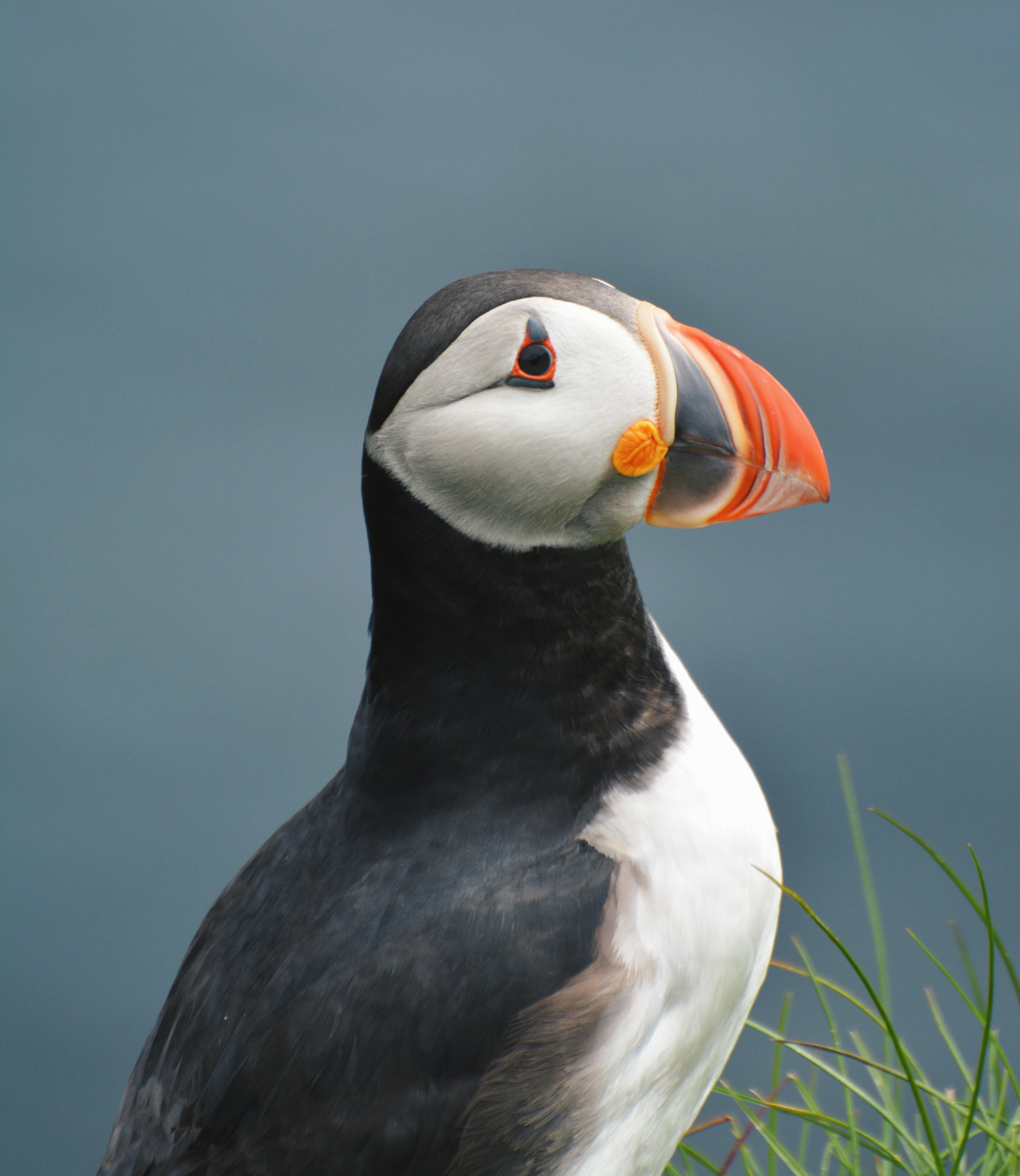
Atlantic Puffin (Photo: Jill Taylor)
Puffins call Newfoundland home only from April to August. They return to the island they were born on to raise their own young – one chick per year, in a maze of muddy but tidy burrows. Most notably, Newfoundland is home to the largest Atlantic puffin colony in all of North America, and second only to Iceland in the world. It is located on the easternmost coast of Newfoundland, in Witless Bay Ecological Reserve, about 30 minutes south of the province’s capital city, St. John’s. There are four islands in this reserve: Gull, Great, Green and Pee Pee. During the breeding season, these islands are home to over 1 million seabirds of nine different species, approximately 365,000 of which are Atlantic puffins.
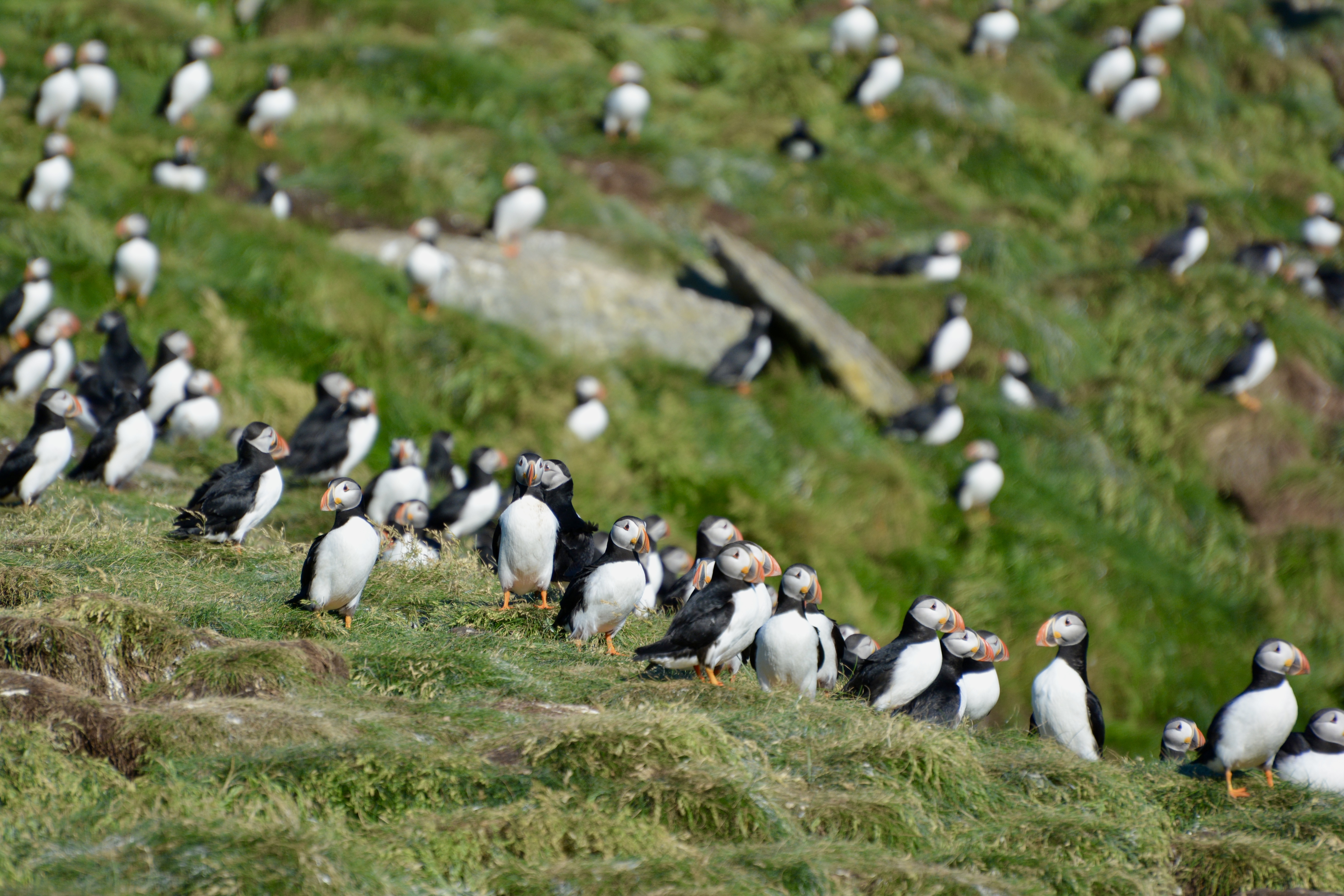
Newfoundland and Labrador is home to the largest Atlantic Puffin Colony in North America. (Photo: Jill Taylor)
A COMPLEX SOCIAL COLONY
The species is long-lived (about 25 years), monogamous, mates for life, and exhibits strong natal philopatry (the tendency of an animal to return to the area of its birth), often returning to a burrow within 2m of the previous year. As such, an individual puffin will undoubtedly interact regularly with the same neighbours over the course of its life; and yet, it is currently unknown how puffins recognize each other.
My research group, the Visual Ecology Lab at Memorial University of Newfoundland, is interested in exploring visual signals in birds and fish, including the social network of a puffin colony and their ability to recognize conspecifics (another puffin of the same species). My graduate research focuses on recognition, which is useful for almost all social interactions and plays a vital role in communication, cooperation, dominance hierarchy, mate recognition and parental care. It is unclear which traits mediate recognition in a puffin colony and whether the puffins’ social network changes when the birds are away from the burrow, i.e., during wheeling (when a large number of birds take a broad elliptical flight path); rafting (when a group of birds gather to float on the water’s surface together); or when foraging/diving for food.
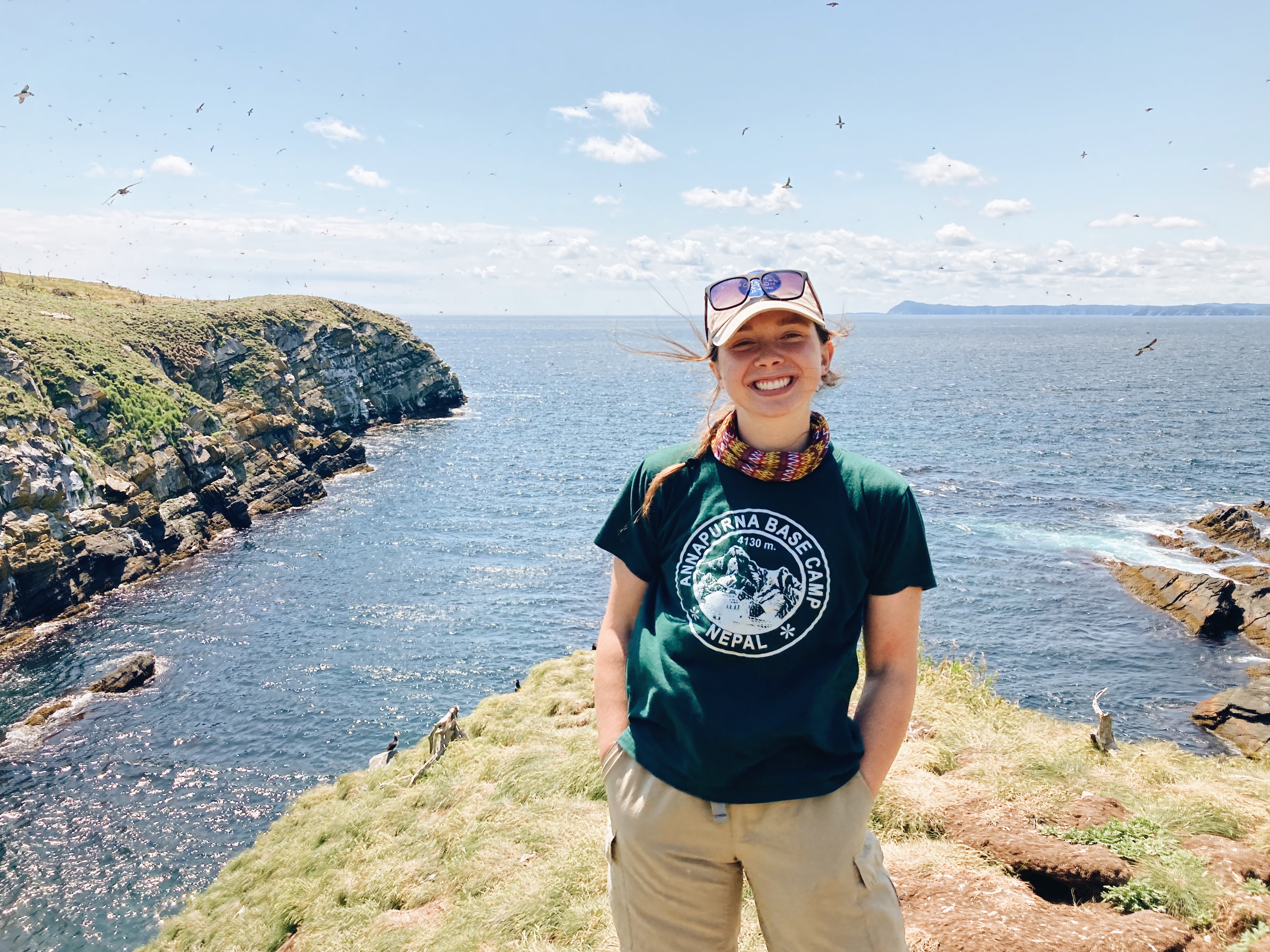
Author Jill Taylor with Witless Bay in the background (Photo: Katja Kochvar)
THE PUFFIN PATROL
Currently, the population of puffins is relatively stable in Canada, but the Atlantic puffin is listed as Critically Endangered in Iceland, with a global classification of Vulnerable. Warmer ocean temperatures are causing some fish species to move deeper in the water column. In some cases, these fish become inaccessible to puffins, as the birds are not adapted to dive deeper than 60m. In Newfoundland, the Canadian Parks and Wilderness Society (CPAWS) organizes a community Puffin and Petrel Patrol to rescue and return stranded pufflings (baby puffins) and storm-petrels safely back to sea. Previous research has shown that storm-petrel strandings are reduced when anthropogenic (human) sources of light are turned off, and this could extend to puffins.
If you live near the coast, please turn all outdoor lights off at night; not only will this help you save on your power bill, but it could also help save a seabird.
Designated in 1991, the Atlantic puffin is the provincial bird of Newfoundland and Labrador. Researching their complex social structure is crucial for understanding the visual ecology of this iconic species. Seabirds are important indicators of the overall health of marine systems. Puffins return every year to Newfoundland, and with them, history, culture, and thousands of tourists. It is important to understand what keeps these birds coming back.
Want to help Canadian species like the Atlantic Puffin and more? Stay tuned with the latest in Canadian nature by subscribing to our email updates. You’ll receive regular updates about what we’re doing to protect Canadian nature and how you can help.

